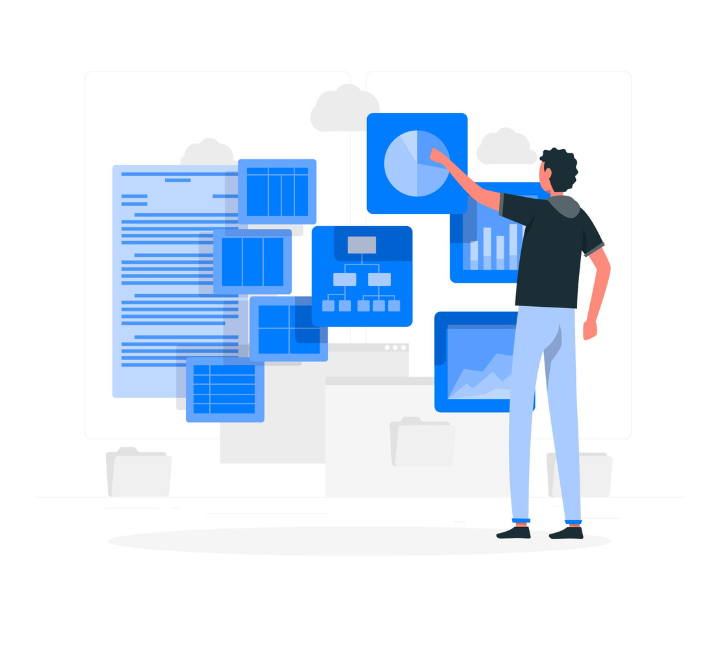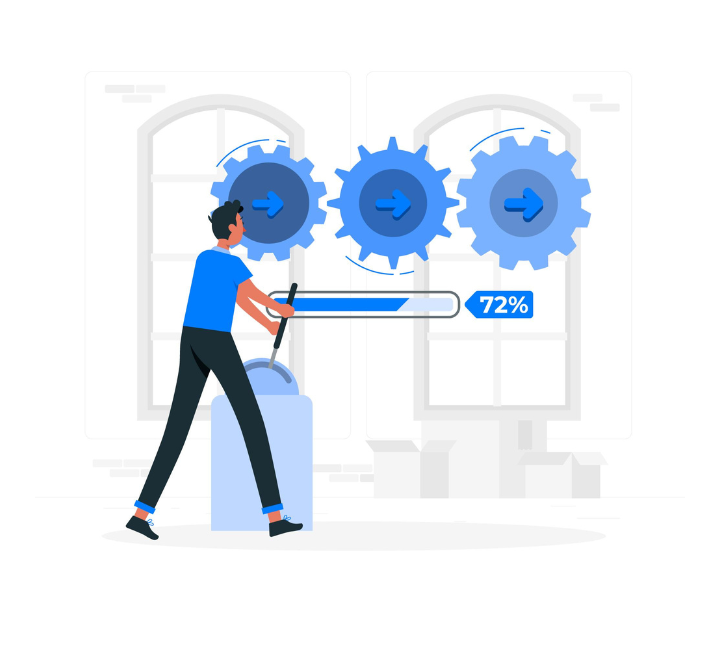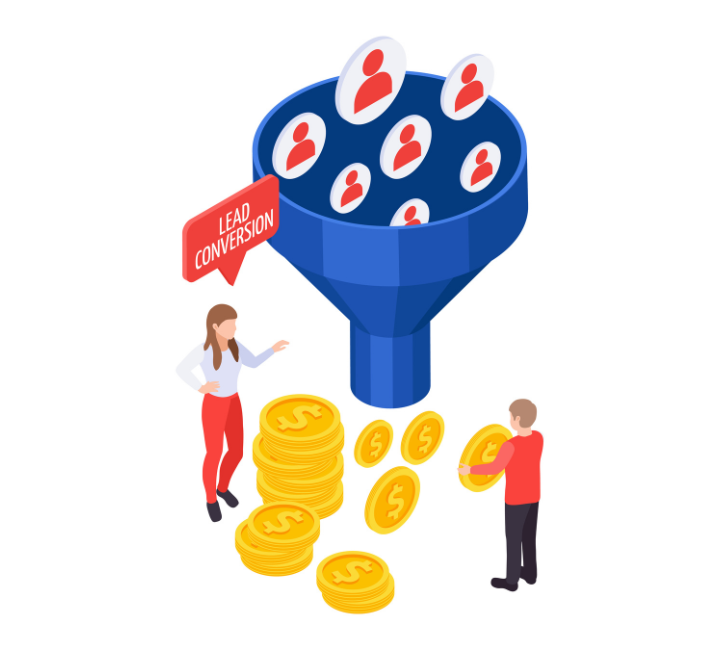Intent Data 101: What is Intent Data and How to Use it for Your Business

Introduction
In today's digital landscape, data-driven decision-making has become the cornerstone of successful businesses.
From startups to multinational corporations, organizations are leveraging various forms of data to refine their strategies and achieve better outcomes. One such powerful form of data that has gained significant attention is 'intent data.'
Research indicates that, on average, a B2B prospect has already completed 67% of their buying journey before even interacting with a sales representative.
Intent data provides invaluable insights into the behaviors and activities of potential customers, aiding companies in understanding not just who their audience is, but also what they intend to do.
This can significantly influence marketing strategies, sales approaches, and even customer retention tactics.
In this comprehensive guide, we will explore what intent data is, its key components, why it's crucial for modern businesses, and how you can effectively use it to achieve your business goals. Whether you're a marketing professional, a sales leader, or a business owner looking to leverage data for growth, this article is intended for you.
What is Intent Data?
Intent data refers to the collection of information that helps businesses understand the intention behind a consumer's actions, specifically online actions.
Source: Clearbit
In the industry, there are two primary types of intent data:
Explicit Intent Data: This is data where the intention is clear and direct. For example, when a visitor fills out a "Contact Us" form on your website, their intent to get in touch is explicit.
Implicit Intent Data: This involves more subtle clues, such as web page visits, time spent on certain pages, or the type of content consumed. This data requires interpretation to understand the user's potential interests or intentions.
Understanding intent data involves examining several components:
Contextual Information: This includes the content topic, source, and medium where the interaction occurred. For instance, a user reading a blog post on "best CRM software" on a tech review site could indicate an interest in purchasing CRM software.
Behavioral Cues: These are activities like page visits, clicks, form submissions, or social media engagement. For example, someone who has visited pricing pages multiple times might be close to making a purchasing decision.
Demographics: Information like job title, company size, and industry can provide additional layers of intent data. For instance, a CEO of a tech startup visiting your software product pages may signify a high-value opportunity.
Intent data can be gathered from different sources:
First-Party Data: This is data collected directly from your website, CRM, or other owned media. Examples include sign-up forms, direct customer feedback, and web analytics.
Third-Party Data: This is data sourced from external platforms or data providers. These providers compile intent data from multiple online platforms and sell it to interested companies.
Understanding the difference between these sources can help you choose the best approach for your specific needs and comply with data regulations.
Why is Intent Data Important?
Intent data is not just a buzzword; it has tangible benefits that directly impact various departments within a business, from marketing to sales to customer retention. Here’s how:
Marketing Benefits
Personalization: Understanding user intent allows marketing teams to deliver highly personalized content and advertisements. Instead of a one-size-fits-all approach, you can tailor your messaging to suit the needs and interests of individual users.
Better Targeting: Intent data can help you segment your audience more effectively. You can create specific campaigns for users at different stages of the buyer's journey, thus maximizing the efficiency of your marketing efforts.
Improved ROI: By focusing on an audience that has already shown interest in your products or services, you're more likely to see a higher return on investment (ROI) for your marketing campaigns. It's cost-effective marketing at its best.
Sales Benefits
Lead Scoring: Sales teams can use intent data for better lead scoring. Knowing which leads are more likely to convert can help prioritize sales efforts, making the team more efficient.
Sales Prioritization: When your sales team knows who is more likely to buy, they can focus their efforts on high-priority leads, thereby increasing the chances of closing deals.
Customer Retention
Informed Retention Strategies: Intent data isn’t just about gaining new customers; it’s also about retaining the ones you have. For example, if existing customers are checking out upgrade options or new features, a timely interaction from a customer service rep could result in upselling or cross-selling opportunities.
How is Intent Data Collected and Processed?
Collecting and analyzing intent data is a multi-step process that requires a combination of tools and technologies. Here's a breakdown of how it generally works:
Data Collection Tools
Cookies and Tracking Pixels: These are small pieces of code embedded in websites to track user behavior. They capture clicks, time spent on pages, and even mouse movements.
CRM and other Databases: Your Customer Relationship Management software can also serve as a source of intent data, especially first-party data. It stores information on customer interactions, purchases, and engagement levels.
Data Analysis
Once the data is collected, the next step is to analyze it to extract meaningful insights. Here are some techniques commonly used:
Natural Language Processing (NLP): This is particularly useful for understanding user queries, reviews, or social media mentions. It helps in discerning the context and sentiment behind words, thereby better-gauging customer intent.
Predictive Analytics: By studying past behaviors and other variables, predictive models can forecast future actions. This is invaluable for proactively addressing customer needs or concerns.
AI and Machine Learning Applications: Advanced AI algorithms can sift through enormous amounts of data to identify patterns or trends that might not be immediately obvious. This can be particularly useful for segmenting your audience based on their likely future actions.
Practical Applications of Intent Data
Understanding intent data is one thing, but applying it practically to your business processes is where the real value lies. Here are some areas where intent data can make a significant impact:
In Marketing
Content Personalization: Knowing what topics or products a visitor is interested in allows you to tailor content specifically for them, enhancing user engagement and increasing the likelihood of conversion.
Campaign Targeting: With intent data, you can create highly targeted ad campaigns that resonate with potential customers. This ensures that your advertising budget is spent more efficiently, reaching those most likely to convert.
In Sales
Lead Prioritization: Sales teams can use intent data to prioritize leads that are most likely to convert. This ensures that efforts and resources are allocated to opportunities that are most likely to generate revenue.
Account-Based Marketing (ABM): For businesses using an ABM approach, intent data can provide insights into which accounts are actively researching solutions, helping to tailor sales pitches and marketing materials accordingly.
In Customer Service
Predictive Support: Customer service teams can proactively address issues before they escalate by analyzing behavioral cues. This leads to increased customer satisfaction and can often preempt negative reviews or complaints.
Proactive Issue Resolution: If you notice a pattern, such as a frequent visit to the FAQ section or multiple interactions with support bots, a well-timed outreach from a customer service representative can solve issues before they become problems.
How to Choose the Right Intent Data Provider
Selecting the right provider can be the difference between leveraging effective, high-quality intent data and struggling with information that doesn’t serve your needs. Here are some factors to consider:
Metrics to Consider
Data Accuracy: Look for providers that offer high levels of data accuracy. Inaccurate data can lead to misguided strategies.
Data Freshness: Real-time or near-real-time data can be more actionable. Providers that offer frequently updated data should be at the top of your list.
Scalability: As your business grows, your data needs will too. Make sure the provider can scale with you.
Ethical Considerations
Data Sources: It’s crucial to understand where the data is coming from and how it was collected to ensure it aligns with ethical standards and legal regulations.
Transparency: A transparent provider will be upfront about their methodologies and data sources, helping you make an informed decision.
Budget Constraints
Cost-Efficiency: While it may be tempting to go for the cheapest option, it's essential to consider the ROI. Sometimes paying a little more for quality data can actually be more cost-efficient in the long run.
Implementation Tips and Best Practices
Successfully implementing intent data into your business processes requires thoughtful planning and execution. Here are some guidelines to help you along the way:
Start Small: If you’re new to using intent data, start with a smaller dataset or a single department before scaling up. This allows you to test its effectiveness and make necessary adjustments.
Cross-Departmental Collaboration: Intent data can benefit multiple departments, from marketing to sales to customer service. Make sure all relevant teams are on board and understand how to interpret and apply the data.
Data Integration: Make sure your intent data can be integrated seamlessly with your existing CRM or other databases. This enables you to have a unified view of each customer.
Continuous Monitoring: The digital landscape is ever-changing. Regularly update your metrics and KPIs to ensure you're getting the most out of your intent data.
Avoid Common Pitfalls: Some common mistakes include not verifying data sources, ignoring data privacy regulations, and failing to update old data. Being aware of these can save you from potential issues down the line.
Conclusion
In an age where data drives decisions, understanding and leveraging intent data can give your business a significant edge. From personalized marketing campaigns to smarter sales strategies and enhanced customer retention, the applications are as varied as they are impactful.
Choosing the right intent data provider is a crucial step, one that requires considering metrics of data quality, ethical implications, and budget constraints. Once you've made your choice, a thoughtful implementation strategy is essential for integrating this valuable data into your daily operations seamlessly.
As the landscape of digital interactions continues to evolve, staying abreast of best practices in collecting, processing, and applying intent data can help your business stay competitive and responsive to customer needs. We hope this guide has given you the insights you need to start using intent data as a potent tool in your business arsenal.
Related Articles
Say Hello to iSyndicate Ecosystem

Data Cloud
138+ million contacts that are ready to hear from you.

Email automation
That captures prospects intent actions.

Publishing network
That syndicates your content on 300+ B2B websites

AI voice bot
That communicate with prospects efficiently







